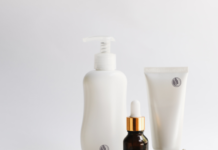
The term “green” is often used as a synonym for “natural” and “eco-sustainable” and gives us the idea that that product or service is good for the environment and our health. This is only partially true, especially in cosmetics. The confusion is so great because, on a commercial and communicative level, the word “green” is also used improperly in the most varied sectors including Green Cosmetics which, taking advantage of the images that represent the plant world, has started to use high-sounding slogans type “100% natural”, “of plant origin”, “eco-bio”.
But when can a cosmetic be considered truly “green”? First of all when its formulation contains active ingredients derived from plants, such as minerals and plants, and not similar active ingredients chemically reproduced in the laboratory.
The downside, when we talk about organic cosmetics, is that plants as living beings can cause slight irritations and / or allergies, unlike what happens for chemicals designed ad hoc and tested in the laboratory.
Sustainability is the key word when it comes to green cosmetics. The products must be obtained through nature-friendly processing methods and the plants must be bred according to organic crops. To reduce the environmental impact, moreover, it is advisable to cultivate them at zero km, or in land near the production laboratories, or to make them travel with sustainable means of transport.
Another thing that makes the cosmetic “green” is that its packaging, primary and secondary, is all recyclable and comes from other recycled packaging. Yes to glass, aluminum and bamboo packaging to reduce the use of plastic and plasticized paper that today are the masters. Many companies are already working on this.
Another evaluation parameter when buying an ecological cosmetic is the presence of the bunny symbol with the word “cruelty free” which indicates that the product has not been tested on animals. However, this symbol is not always present as it is not mandatory to insert it.
Being ecological and respecting nature, in cosmetics also means reducing waste, i.e. the quantities of product that we use daily for hygiene and personal care. As much as a product can be organic, in fact, if used in large quantities it still ends up polluting and damaging the environment.
A “green” shampoo, for example, needs to be done only once. The second step is harmful for three reasons. The first is cheap: we consume a quantity of product that we don’t need, with the consequence that we will have to buy double the shampoo. The second reason concerns the health and beauty of our hair: when too much of its natural hydrolipidic coat is degreased, the scalp will produce more quickly and with more vigor the natural fat that protects it with the consequence that our hair will get dirty first. The third reason concerns the environment more closely: to rinse the head and hair from the second step, we have introduced other surfactants into our purification systems and we have wasted other liters of drinking water.
The really important thing, when shampooing, is to take the time necessary to wet the hair, wash the scalp carefully, massaging with the fingertips with light circular movements and then rinse. It does not matter if it takes five minutes longer, it is time we dedicate to ourselves, to derive feelings of well-being from the cosmetic and to protect the environment we live in.







































